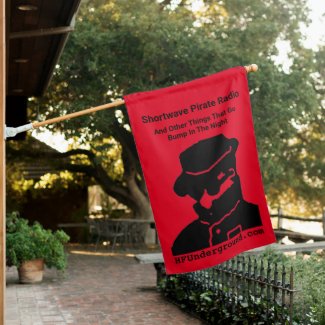NVIS is a subset of standard skywave propagation. The radio waves are still reflected from the ionosphere. The difference is that, as the name suggests, the incident angle is very high, nearly vertical.
NVIS is normally used during the daytime, when there the ionosphere is strongly ionized. The F layer is capable of reflecting the signal straight down, and there is a strong D layer present that prevents DX on the band chosen. For example, 43 meters (6800-7000 kHz) during the daytime. (The same is true for the 40 meter ham band) The D layer attenuates any low angle signals, preventing reception out much further than 1,000 miles or so (for a SWBC station in the many kW range, much less for the typical ham or pirate running 25 or 100 watts, 500 watts is a good rule of thumb). Waves that go straight up, however, are reflected back down. That's NVIS. Noise levels on 43 meters during the daytime are usually quite low, that is because the D layer not only attenuates radio stations, but also distance static from storms, etc.
As you move into evening, the ionosphere weakens. You start to get DX signals (and more noise) as the D layer weakens. As the F layer weakens, you reach the point where it will no longer reflect a 7 MHz signal straight down. The creates the skip zone around the station, where the signal cannot be heard. The skip zone grows as it gets later, and the ionosphere gets even weaker, peaking just before sunrise.
A pirate station operating in say Pittsburgh (the center of Guise Faux's pirate zone) can reach much of the east coast and midwest during the daytime and early evening. At night, there is often a skip zone preventing local reception, but now listeners further away can hear the station.
Does the skip zone exist, and how large is it? It depends on the highest frequency which will be reflected vertically, called foF2. There is a real time foF2 map here:
http://www.spacew.com/www/fof2.htmlThen you need to do some math, as I describe here:
http://www.radiohobbyist.org/blog/?p=245In a nutshell, if foF2 is at least 7 MHz, NVIS is possible on 43 meters. As it gets lower, you start to get a skip zone, the size of which depends on the foF2 value. Sometimes foF2 can get very low, especially when solar activity is low, and during the winter.



